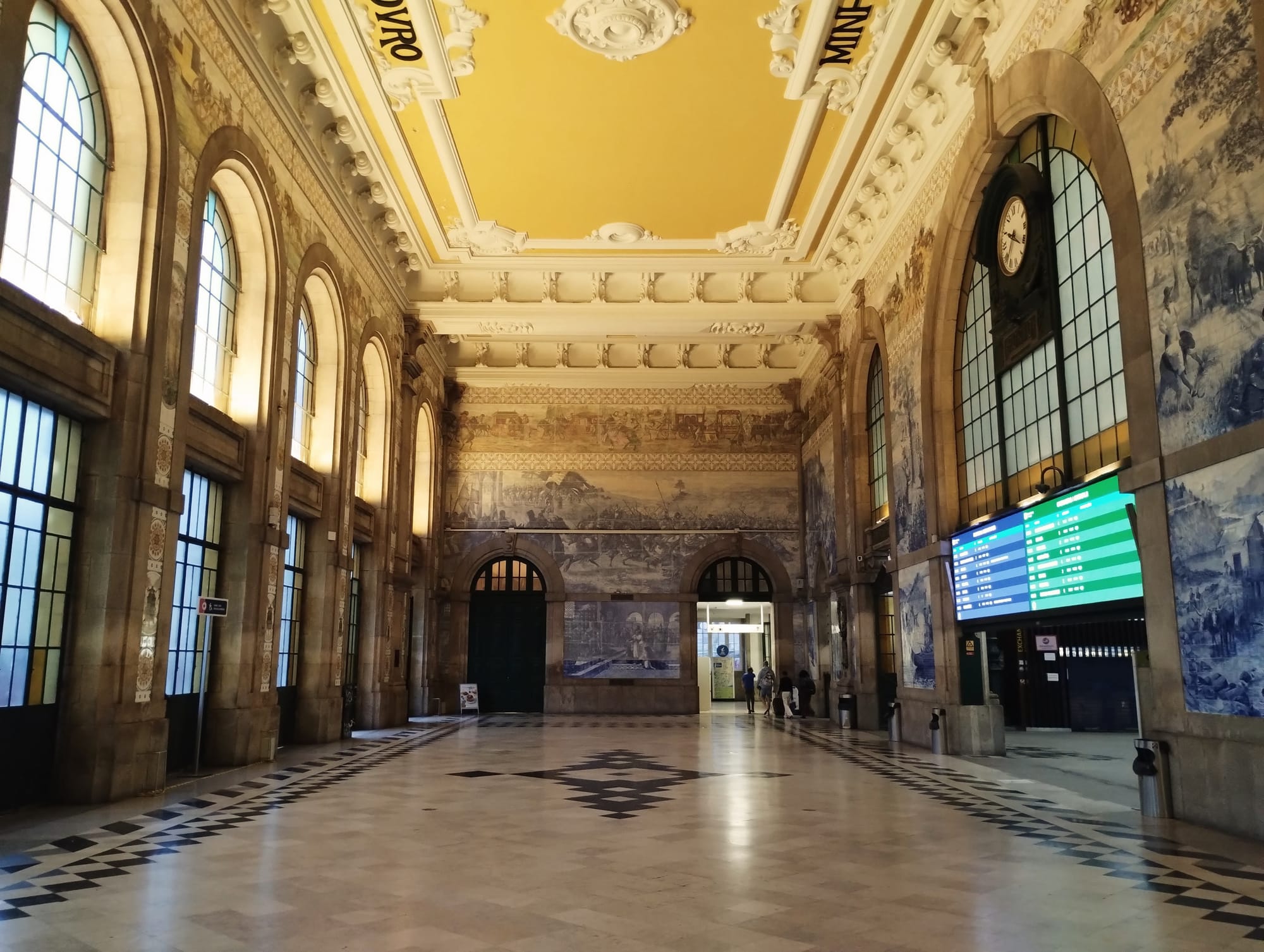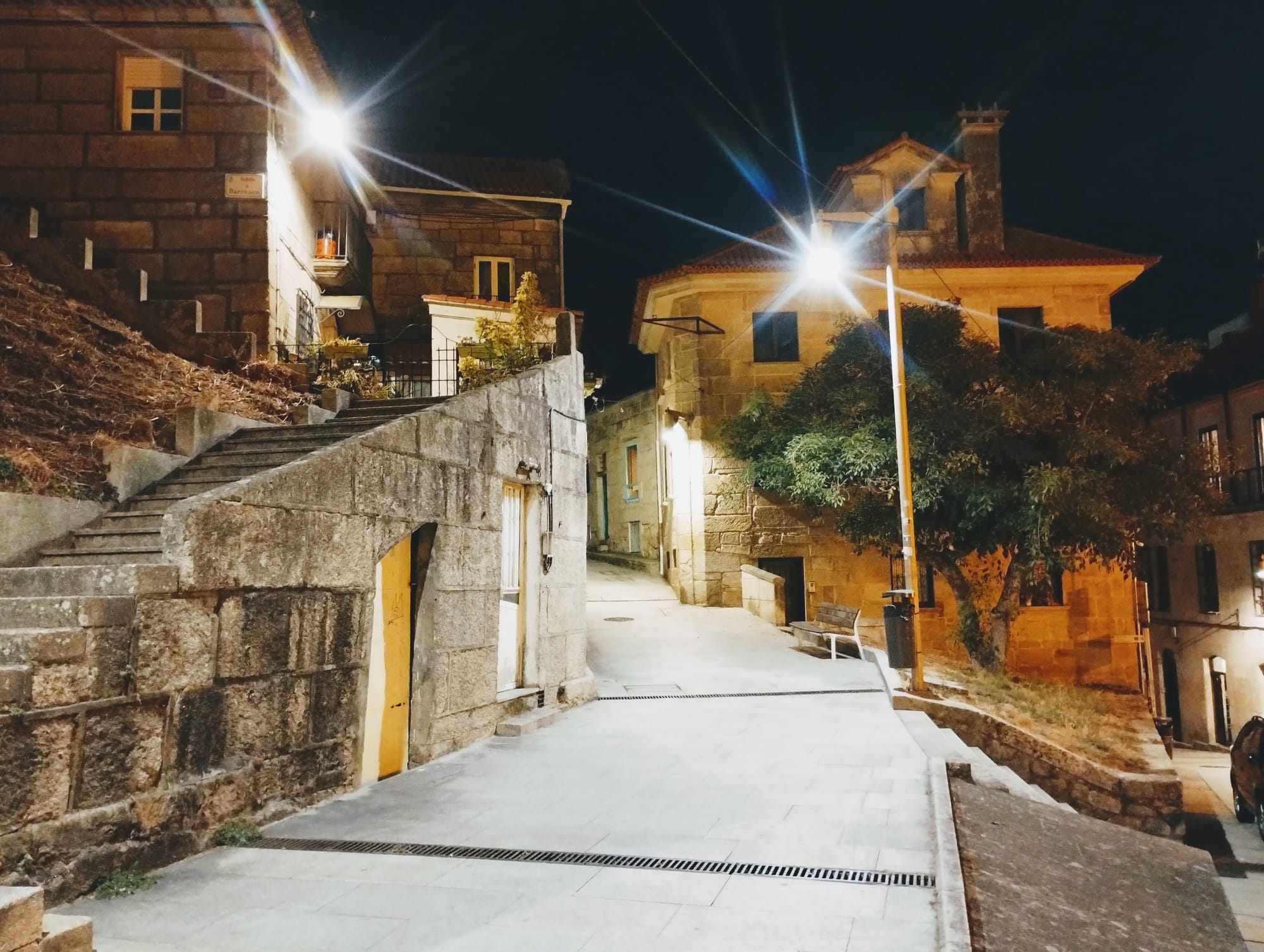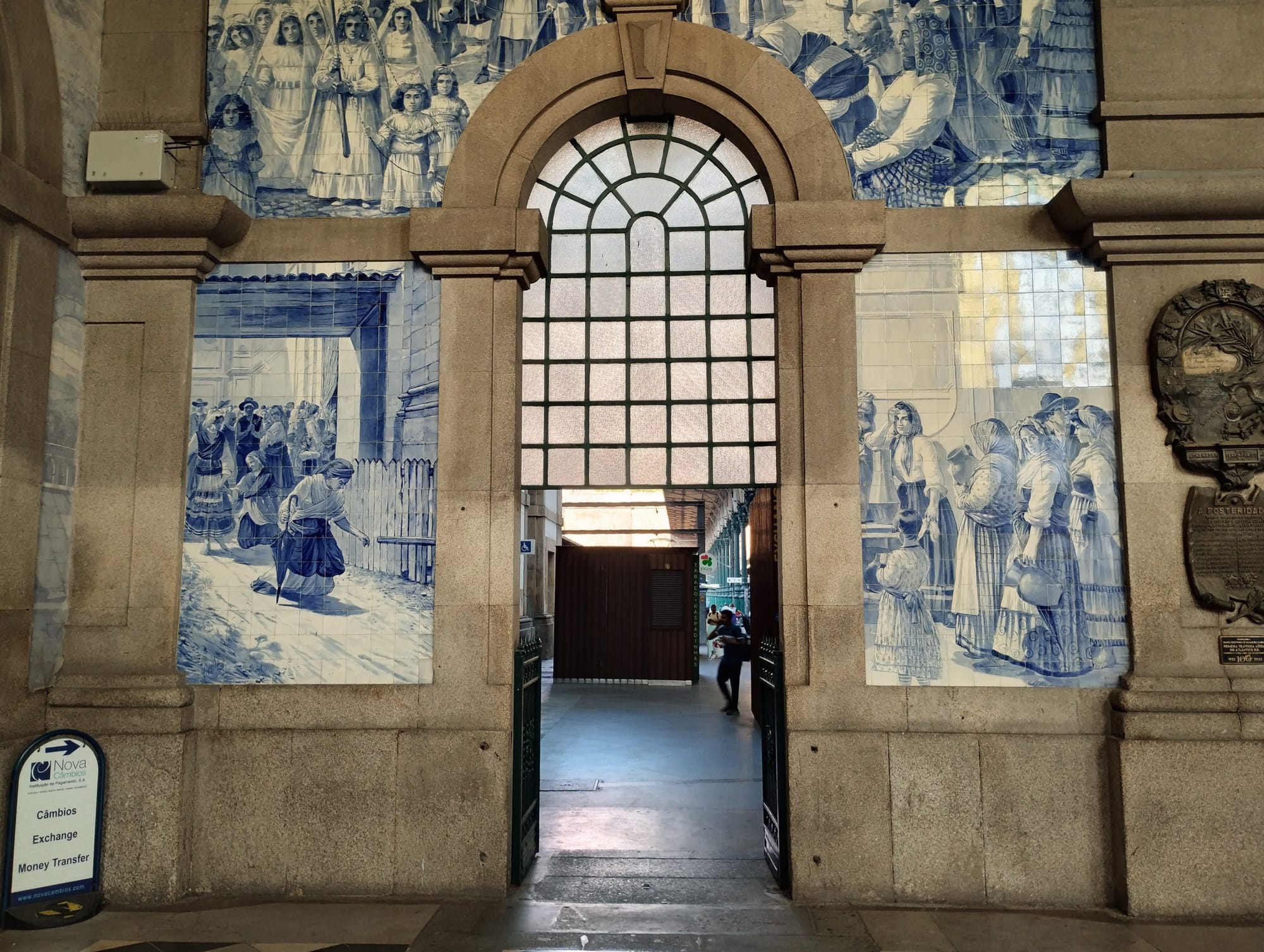Iberian return, day seven: Porto - Vigo
All good things.

My early-morning train to Vigo was from Porto Campanhã, so I arrived with plenty of time to gawp at São Bento.
Mr Hostess, an architect, insists São Bento is Portugal’s most beautiful railway station, though I suspect a hint of local bias. Nonetheless, as I have been through two railway stations in Porto I can confidently confirm that São Bento is the most beautiful railway station I have seen in Porto.

Originally the site of a convent that was demolished in 1892, construction of the Estação ferroviária de São Bento began in 1904. Pauses for port, pastéis, and naps – probably – caused multiple delays leading to the construction of the building ultimately taking (only) thirteen years.
The entrance hall before the platforms is home to large panels of around twenty thousand azulejo tiles (551 square metres) designed and painted by Jorge Colaço, the son of a Portuguese diplomat, born in Tangier. The designs celebrate moments in Portugal's history and rural scenes showing the people of various regions.
The word azulejo derives from the Arabic zellij, meaning "polished stone", the blue and white tiled decoration that can be seen in and on buildings across the city. A lot of the examples exposed to the elements are shrouded with gauze to protect them from damage as they have been clinging to walls for hundreds of years.
Sadly, the station is undergoing extensive renovation work so it's not possible to get a good look at its exterior, but the splendid azulejo that decorate the interior are visible for all to see. At 7am on a Friday morning, there are no tour groups to get in the way.

An everyday commuter train whisked me to Campanhã, and there I had time in the station café for one final pastel and a coffee before a dinky wobbly metro train hurtled us with occasional tooting through the suburbs of northern Porto and on to Viana do Castelo, where a slightly larger Intercity service was waiting to take us the rest of the way north and across the border. As a lady on board told the confused non-Portuguese speakers – although now capable of ordering multiple pastéis and a coffee to eat in or takeaway, I no longer consider myself among them – they used to run a normal direct service but for some reason don't any more.
It is a pretty route from Porto to Vigo, but today's pretty was a little overcast.
We arrived slightly late and I set about finding my hotel. I wanted to take an onward service somewhere but there weren't any trains available, so an afternoon and evening full of culture in Vigo was my only sensible option. I was dreading the wait between arrival and check-in, but when I got to my hotel and asked if I could leave my bag the nice man on the desk checked me in three hours earlier and ten minutes later I'd discovered my bed and continued to discover it quite intensively until about 7 p.m.
I felt that it would not really be sporting of me to spend the entirety of my stay in Vigo horizontal, so ventured out bleary-eyed on a street art mission, which ended up taking me to some lively Friday-night places where beer was served with free nibbles. After a few portions of free nibbles (olives, tortillas, nuts) it became apparent that the nibbles-to-Mahou ratio was weighted incorrectly, and proper sustenance was required lest I fall over.

By this time, I'd inadvertently strayed quite a long way from my hotel and was quickly learning that navigation in Vigo is not a simple feat. The city is built on a hill, and along with the winding usual streets packed with cars there are lots of little staircases, which reliably send Google Maps into meltdown. Some of these staircases are mercifully equipped with lazy stairs, which became more welcome as the evening progressed.
Every now and then another vibrant square reveals itself, where at tables outside bars, spirited older ladies with irritating little dogs drink beer and read El Pais, while sophisticated gentlemen with grey hair nibble olives and read El Mundo.
My final mission for the day was once again falafel procurement, and Google eventually navigated me to a small counter called Dönny on the Rúa de Venezuela, which someone had confidently labelled as being home to Vigo's best döner kebab. I was doubtful as always, but the falafel wrap was very good indeed, boasting good structural integrity that held to the end, perhaps the result of a lack of over-juicing. The flavour was just the right amount of tangy, and all in all it was a most satisfactory use of nine euros.
Back in my hotel, I figured out my final leg home.
I had planned an overnight stay in León, as while looking for tickets on Thursday, that's as far as the train would take me. A desperate last-minute check of the Renfe this evening site showed some availability in second class (boo) on to Vitoria-Gasteiz, where a short change of train will deliver me to Donostia in the evening.
